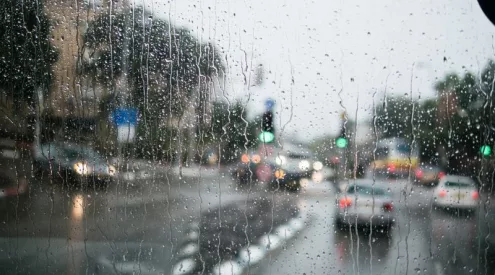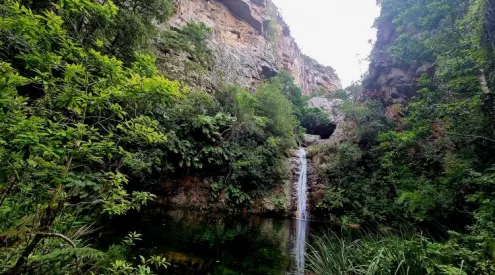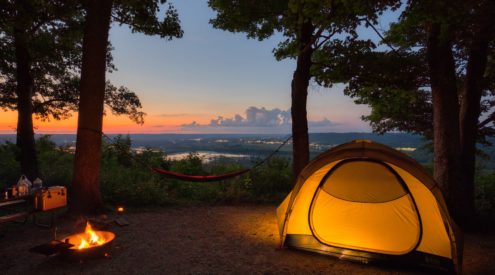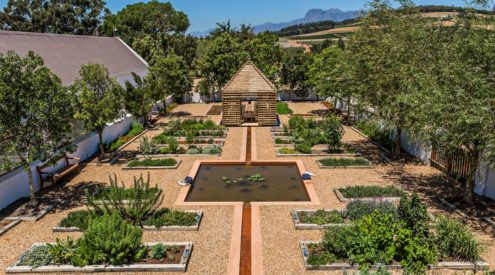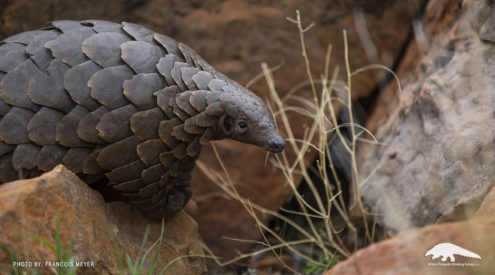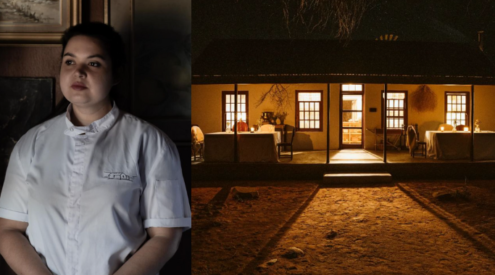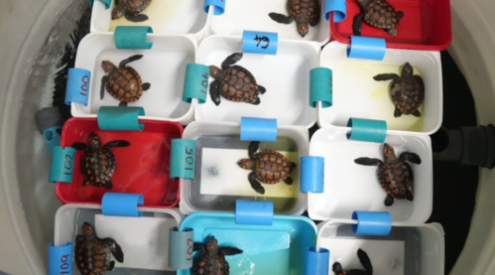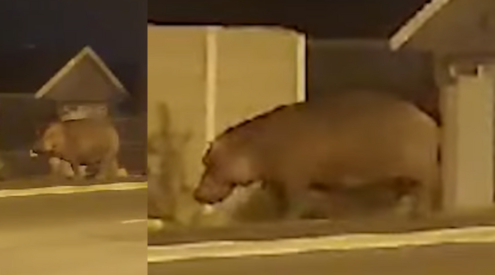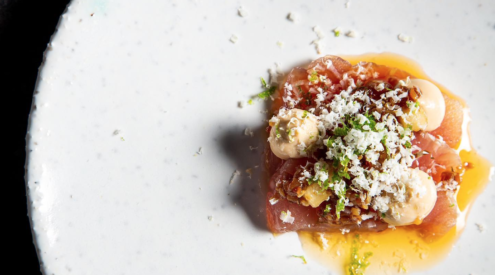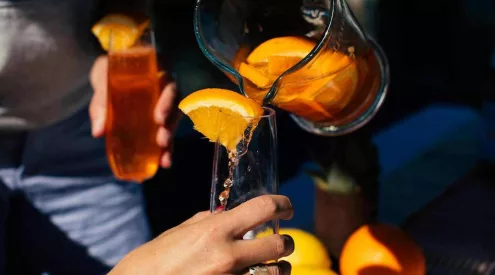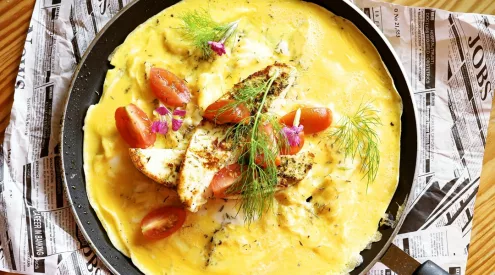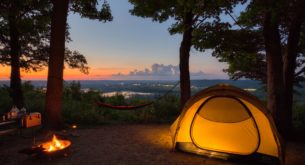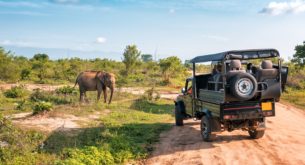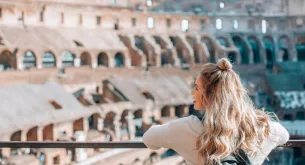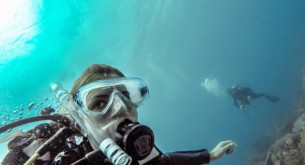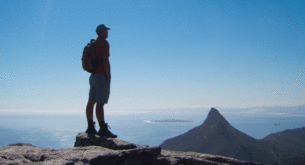Winter is undoubtedly the season of flavour in the Western Cape, with fragrant scents rising off the fynbos. The Gray family piled into a camper van and went foraging and ‘farmstalling’ up the West Coast.

Roushanna keeps an eye on the surfers at Elands Bay point while collecting seaweeds and shellfish for supper.
On a cold Cape Town morning, my husband Tom and I collected our home-on-wheels for the next few days from SA Roadtrippers. It was a fully-kitted, six-berth camper van, with all the mod cons which would allow our family to road-hop in comfort but with none of the hassle of the usual camping set up and take down. We had vague plans of where to go and what to do, but collecting edible wild ingredients from the landscape along the way, coupled with sniffing out the best coffee places (some things you just can’t forage), was our mission.
Ruby, aged six, and Tai, 11, were in their element when we arrived home with the van, and immediately explored every nook and cranny, arguing over who would sleep in the overhead double bed in the main cabin, accessed by a little ladder. And in a travel first for our family, they were both strapped in and waiting in their seats at the dinette table way before we were ready to leave. We cruised down the R27 to Langebaan. Trawling slowly through the suburbs, we discovered succulent edible wild greens including wild spinach, mallow leaves and young veldkool buds (Trachyandra cilliata – a herbaceous shrub) sprawling all over the roadside verges and vacant plots. With our first veg ‘shopping’ done, we picnicked on these (made into a salad) at beautiful Shark Bay, the kids splashing in the lagoon while we enjoyed a windless winter day on the powdery sand.

Fishing skiffs pulled up on the lengthy beach at Paternoster, where kreef (rock lobster) was once the tiny village’s red gold. Sadly, this shellfish delicacy is no longer as abundant as it once was.
Our first night was at Tietiesbaai in the Cape Columbine Nature Reserve near Paternoster. There are many campsites scattered around the coves, but only one ablution block at the main camp area. Luckily we had our own onboard en suite, so we decided on a spot right near the beach. Arriving late (with no tent-pitching hassle – game changer), we opted for an easy meal of seaweed broth couscous, which had been made at home the night before, with salad and good old cheesy jaffles on the fire.
We woke to the instant mood-lifting sound of the waves. The kids explored the area for fishing spots and pretty shells, while we had coffee and rusks on the beach and planned our next meal of flatbreads on the fire. We’d forgotten flour at home, giving us a great excuse to visit Paternoster village with its quaint white-washed houses, old fishing boats filled with succulents and several restaurants lining the main road. Oep ver Koep winkel offers a little bit of everything and we left with brown-paper packets filled with dried hereboontjie beans, buttermilk rusks, red wine, ginger biscuits, a fluffy hand-knitted beanie, stoneground flour – and that South African school holiday essential, Chappies bubble gum.
Back at the camp, we made a wild greens flatbread, incorporating dune spinach, dried wild nori seaweed and wild sorrel flowers in the dough to enjoy with a fire-cooked egg shakshuka brunch on the beach. After reading, drawing, napping and tea – the foundation of all good holidays – we explored the area on bikes and on foot. Every cove offered something unique: secret pathways leading up to koppies overgown with succulants, rock pools with a kaleidoscope of shimmering seaweeds, beautiful winter flowers and shell-filled beaches. So we decided to stay another night, but in a different campsite with a breathtaking view of the sunset.

The Gray family (from left: Tai, Tom, Rubi and Roushanna) exploring the rocky intertidal zone at low tide on Lambert’s Bay beach.
The weather came in overnight and we watched the grey skies and matching sea through the curtains of the cosy van. The recommendation of a great coffee shop in Paternoster drove us to pack up and visit Junk & Disorderly next morning. Once a donkey shed, it’s now refurbished and filled with curiosities and freshly baked goods. There were excellent sourdough breads and a startlingly good selection of chorizo and artisanal cheeses. We fetched our own enamel cups from the van for takeaway cappuccinos.
Back on the road, we headed towards Velddrif and a place called Bokkom Laan, ‘where time stands still’. We were hoping to visit the fish shops there but unfortunately they were all closed due to seasonal freshwater coming down the river, which muddies the water and makes for bad fishing after the rains. But the lane’s charm remained and it really was like stepping into a different slice of time altogether. At a gem of a coffee shop called Columbine Co we bought bokkoms (whole salted and dried mullet fish), coffee and kombucha, and had interesting conversations with some of the locals, learning about the history of the area and surfing tips from proprietor Rudolf Dante. The building was originally his grandfather’s bokkomhuis where the fish were cleaned, salted, hung and sold. Made from clay, crushed shells and sand, it was one of the first built in Bokkom Laan. We also met resident cat Minkels and, outside on the jetty, we encountered John Wayne and his UB40 – a semi-submarine lifeboat that looked like something out of a Tintin book.

An array of farmstall treats and treasures awaits visitors at Junk & Disorderly in Paternoster.
Tearing ourselves away from this quirky lane, we meandered on to Lambert’s Bay, popping in at Die Skooltjie Padstal for wood, ‘Makataan Snot en Trane’ jam and sheep fat. A quick roadside stop to collect Spalmanthus (or krypvygie), a succulent and edible groundcover, led to the happy discovery that it paired well with a strip of bokkom – the perfect seaside canapé! Along the coastal dirt road south of Lambert’s Bay, and opposite the popular Muisbosskerm outdoor eatery, we found Malkoppan Campsite. It had nearby surf spots for Tom, a bike-riding paradise for the kids and the promise of a coastal forage the next morning for me – so everyone was happy. Supper was a comfort-food pot of ocean-soaked hereboontjies, veldkool and bokkom stew with sheep’s fat potatoes cooked over the coals. We were lulled to sleep by the distant rumbling of the Sishen-Saldanha train and the sea.
On the beach the following morning, we collected Mediterranean mussels, limpets, periwinkles, kelp, and a selection of smaller seaweeds. We picked more wild greens to supplement our coastal catch on the walk back to camp. For lunch we had a seaweed broth with wontons – little floating envelopes filled with limpets and lightly marinated wild greens. Fortified, we packed and hit the road again. Elands Bay is a small fishing village with a long white beach, an old crayfish factory, spectacular flora and a peeling left-breaking surf point. As we pulled into the campsite, right on the beach, it started to pour with rain so we curled up and got cosy in the van. When the sky cleared we made a fire and steamed the mussels we’d collected at Lambert’s over the coals using two different methods – some in a pan and some in kelp bulbs. Hunks of fresh bread and butter with ice-cold beers completed the feast around the fire.

Filling wonton parcels with diced limpet and marinated greens; flatbread dough with dune spinach, seaweed and sorrel flowers. Preparing seaweed broth with whole garlic cloves, foraged mussels and veldkool buds; seaweed broth with limpet and wild greens wontons.
A crisply cold but clear morning mellowed into a beautifully sunny day with blue skies and no wind – EBay’s secret season. It was time to bring out the fire waffle irons for breakfast, and I decided to add an element of the beach into a basic waffle recipe. I infused a piece of kelp in the butter by simmering both over low heat until the kelp turned bright green and the butter smelled like ocean. This is an easy method of adding an umami (savoury) flavour to any dish, imparted by the natural glutamate. Later we walked up the beach to the rocky intertidal pools right in front of the surf point to collect mussels, periwinkles and seaweed for lunch.
That evening the most breathtaking sunset glowed in a band of orange hues over the sea, illuminating the wet beach, with just a sliver of moon. The ocean had been its usual generous self with good waves and plenty of rock-pool ingredients. And the edible greens grew literally wherever we stepped. But I’d also been looking up – because each morning and evening brought an everchanging, vibrant colour palette splashed across the sky. Art in motion, and wildly delicious… West Coast, we will be back. Find Roushanna’s recipes for foraged treats online at getaway.co.za.

Roushanna harvesting limpets.

A freshly-foraged rock-pool basket includes kelp, sea lettuce, wild nori, tongue weed, mussels, limpets and periwinkles.
Foraging need-to-know:
1. Get a mollusc permit for R96 at any post office to collect shellfish and seaweeds.
2. Winter is best for wild greens, summer for seaweeds.
3. Always forage legally, responsibly and sustainably.
4. It’s illegal to collect any plants from parks, reserves or private land or to collect seaweed from marin protected areas.
5. Only eat plants and seaweed that you are 100% sure of positive identification – there are a lot of poisonous plants out there.
6. Only pick what you need – a few leaves from each plant and a third of a blade of seaweed.
7. Never pick any roots or anything that is not growing prolifically in an area.
8. Never pick from polluted land or water, or along busy highways.

Travelling in a camper van allows for settling in remote spots, and waking up to views like this in Cape Columbine Nature Reserve.
Directory
- Shark Bay is a lovely beach cove on the southern side of Langebaan, the sprawling holiday town with a variety of accommodation, supermarkets and restaurants on the Langebaan Lagoon, and adjacent to the West Coast National Park. Entry R59 per adult, R30 per child. sanparks.org
-
Cape Columbine Nature Reserve is open for day visitors (R25 pp) and there’s camping at Tietiesbaai Municipal Campsite, from R115 pp. Crime can be a problem for campers so be vigilant. 022 752 2718. saldanhabay.co.za
-
Oep ve Koep in Paternoster is a tea garden/ bistro. It also sells farmstall treats, gifts and preserves. 022 752 2105
- Junk & Disorderly is a coff ee shop/restaurant/deli in Paternoster, and a good place to find cheese and charcuterie. 082 876 2711
-
Wolfgat in Paternoster is the home of top chef Kobus van der Merwe. It’s a wildfood fine-dining adventure for those not into foraging for themselves. R850 pp for the seven-course tasting menu. wolfgat.co.za
-
Columbine Co in Velddrif sells great coffee and bokkoms, and is a beautiful heritage building. 061 771 7518
-
Die Skooltjie Padstal in Velddrif stocks a large selection of preserves, 084 549 3166
-
Malkoppan Campsite has stands from R375 (five people), double stands from R750 (max 10 people), 083 370 0400, muisbosskerm.co.za
-
Muisbosskerm is a rustic open-air eatery right on the beach near Lambert’s Bay. Come hungry for a lengthy feast of seafood, homebaked bread and West Coast dishes such as hotnotskool stew, waterblommetjiebredie and Hanepoot korrelkonfyt. R320 pp for adults, from R80 for children. Booking is essential as it’s not open every day. 027 432 1017
-
Elands Bay Municipal Caravan Park is right on the beach and has limited shade. Stands from R165 for six people. 022 972 1736/45. westerncape.gov.za
-
Learn about coastal or fynbos foraging at one of Roushanna’s workshops in Cape Town. R650 adults, R350 kids. veldandsea.com


Our En-Suite Home
This six-berth, fully-equipped camper van was a great way to travel; it costs from R1,265 a day from SA Roadtrippers. They also hire out 4×4 safari campers, motorhomes and RVs, with branches in Cape Town, Joburg and Windhoek. saroadtrippers.co.za

